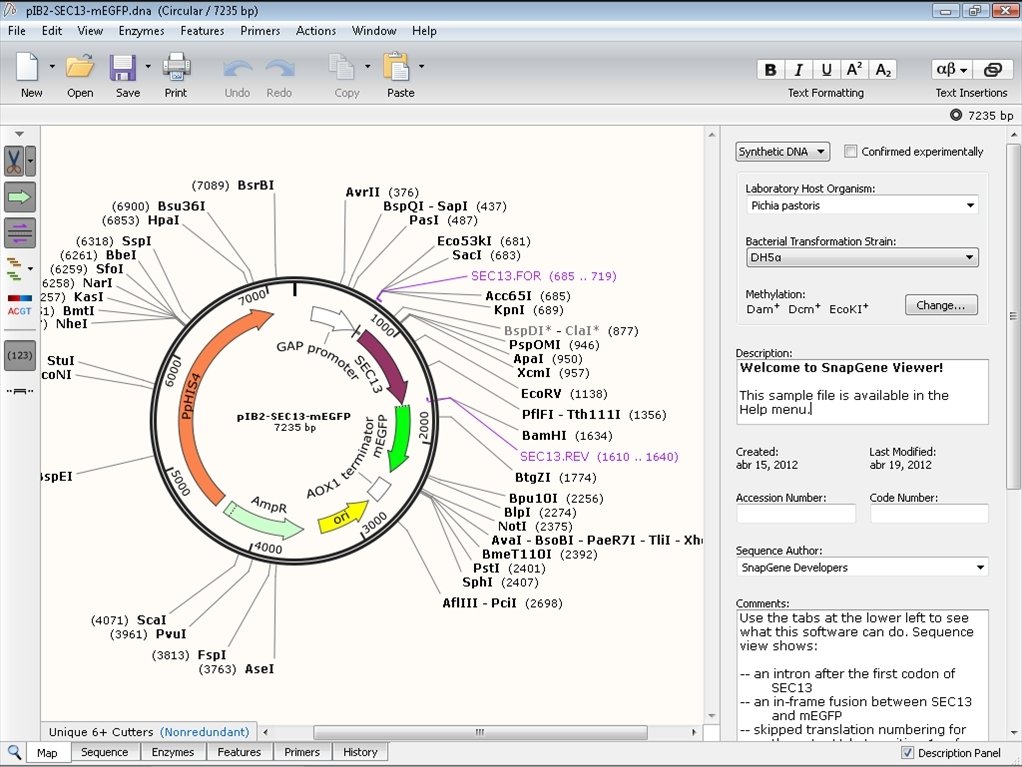
Use SnapGene's extensive database to find common features in DNA sequences. The color is visible in both the Map and Sequence view.Īnnotate frequently used functions automatically, or annotate new functions manually. Set the selected DNA or amino acid sequence to one of ten colors.Ĭolor two DNA strands or protein sequences. When copying and pasting the sequence, the function is automatically transferred.Įdit the ends of linear DNA sequences to add or remove overhangs or phosphates. The ancestral protein or DNA sequence can be reproduced as a separate file.

View the automatically generated protein sequence graph history.

The checkbox toggles between compact or fully expanded display. Sort the annotated feature list by name, location, size, color or type. The same analysis can be performed on selected parts of the protein. View protein molecular weight, extinction coefficient, isoelectric point and amino acid composition. Use 1- or 3-letter amino acid codes with related characteristics to view protein sequences. Use the multi-function controls to adjust the zoom factor and display area. Use the proprietary MICA algorithm to find the sequence in the chromosome immediately. Use SnapGene's efficient data processing function to scan large DNA sequences with thousands of annotation functions. Ancestor sequence can be restored as a separate file View the automatically generated graphical history of DNA constructs. Sort the hybrid primer list by name, length, color, binding site, directionality or melting temperature. Sort the annotated feature list by name, location, size, color, directionality or type. Cut sites can be displayed as numbers or rows, sorted by name or frequency.
#FIND SEQUENCE SNAPGENE VIEWER SERIES#
Single chain mode displays a compact overview with color features.Ĭhoose from a series of enzyme groups. Use double-stranded mode to view enzyme sites, with features of translation, primers, and DNA color.


 0 kommentar(er)
0 kommentar(er)
